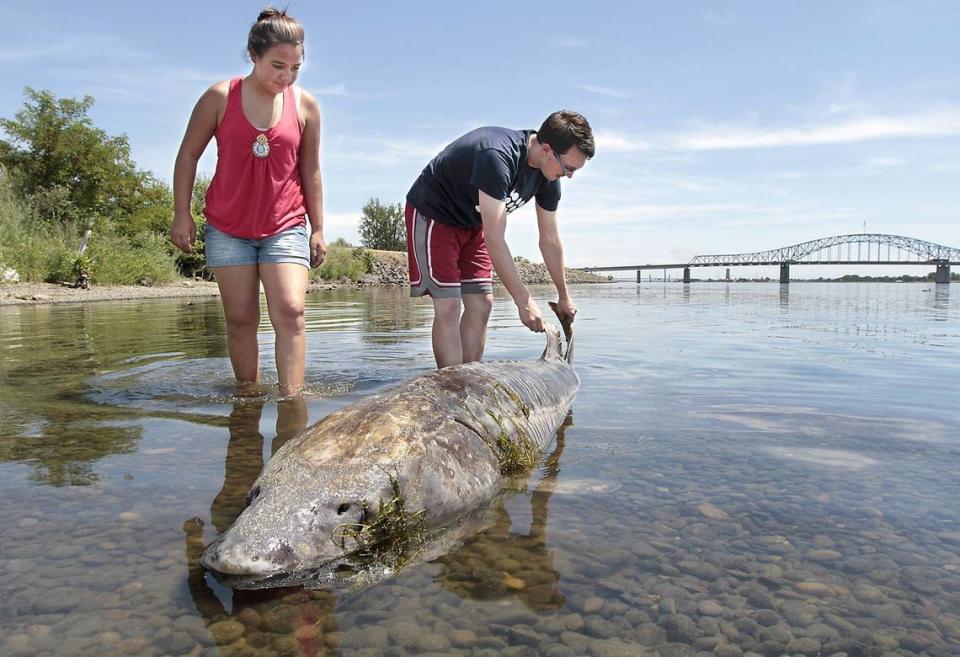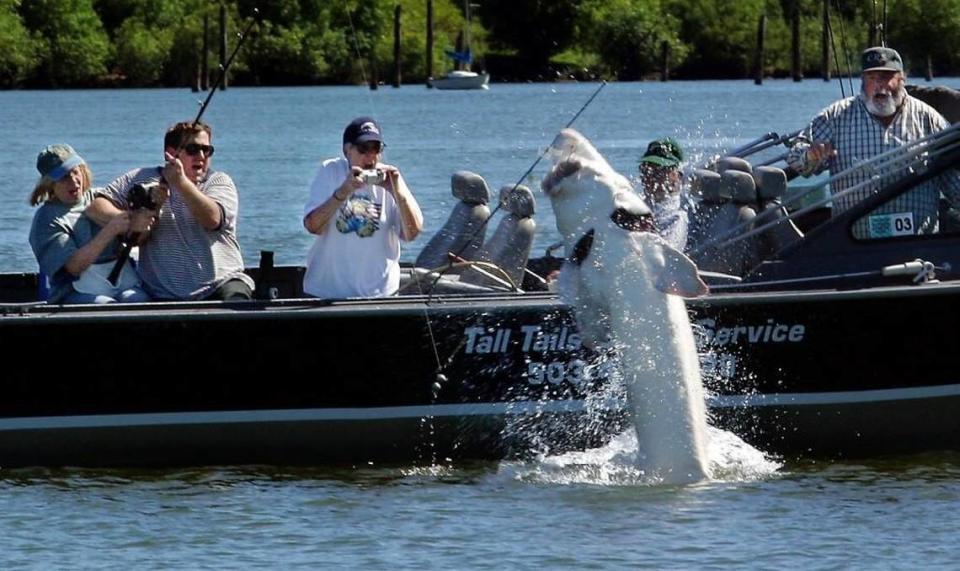Sturgeon dying in Columbia River as water heats up to above historic summer average
Dead white sturgeon have been spotted floating in the Columbia River as water has warmed to higher than the historic summer average.
The Washington state and Oregon Department of Fish and Wildlife have closed much of the river to sturgeon fishing starting Saturday.
“It seems like every day we’ve pulled out of the boat ramp we always find one or two just upside down,” said Jerry Reyes, owner with his son, Ivan Reyes, of Flatout Fishing in Pasco.
He’s been launching his boat at Plymouth in south Benton County.
All of the dead sturgeon he has seen have been seven feet or larger, he said.

“Right now they are on a feeding frenzy,” he said. “The water gets warm and they go on a hunt. There are a lot of sockeye, a lot of shad in the water right now so they are just happy to grab all the food but they can’t digest it fast enough.”
Flatout Fishing voluntarily stopped catch and release of sturgeon before the Oregon and Washington agencies jointly made the decision to end sturgeon fishing this week through Sept. 15.
Catch and release of sturgeon is usually open year round in much of the Columbia River.
The closure that starts Saturday is from The Dalles Dam upstream to Priest Rapids Dam above the Tri-Cities. It remains open in the sections of the river downstream of The Dalles Dam and Bonneville Dam, where populations are higher.
About two dozen dead sturgeon have been seen floating in the John Day pool, with more in the McNary pool, the Hanford Reach and The Dalles pool, according to Washington state Department of Fish and Wildlife.
“Sturgeon are very hardy fish in a lot of ways, but they’re also very vulnerable to certain stressors, especially in the late spring and summer period after they spawn,” said Laura Heironimus, sturgeon lead with the Washington Department of Fish and Wildlife.
High water temperatures and lower dissolved oxygen stress can kill sturgeon, according to the Oregon Department of Fish and Wildlife.
“We see some sturgeon mortalities reported every year, but the number this year is higher than normal and in areas with lower abundances and recruitment concerns, and we want to give these fish every chance possible to survive,” Heironimus said.
White sturgeon populations in the lower and mid part of the Columbia River are not considered to be in danger, but there are not as many as fish and wildlife experts would like.

Fortunately, the number of dead sturgeon has been lower than seen in the drought of 2015, Heironimus said.
That year by mid July about 66 dead sturgeon had been seen in the Columbia River from McNary Dam to Boardman, Ore. More than 20 were reported upstream, from the Hanford Reach downstream to the McNary Dam.
Warm water, low flows and the resulting dropping dissolved oxygen levels were blamed then for stressing large sturgeon. In addition, they were gorging on sockeye salmon and then trying to swim on hot days.
White sturgeon can grow to more than 10 feet in length and weigh hundreds of pounds. Some live to 100 or older.
People who see a sturgeon carcass are encouraged to report it at publicinput.com/mortalityreporting.

